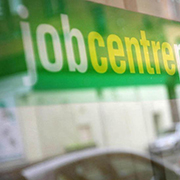ACCORDING to the latest data from the Office for National Statistics, Scotland’s employment rate of 75.3 per cent currently falls below the UK average of 75.9%.
This was down 0.2% year-on-year and 1.2% quarter-on-quarter compared with the national average rate, which grew 0.3% year-on-year and 0.2% quarter-on-quarter.
Meanwhile, the economic inactivity rate in Scotland increased by 1.4% quarter-on-quarter to 22.2% and 0.3% year-on-year, again falling behind the UK average rate of 21%, which was down 0.4% quarter-on-quarter.
However, the data also indicate that Scotland’s unemployment rate continued to outperform the UK as a whole, staying strong at 3.1% versus the national average rate of 3.9%.
This means fewer people in Scotland are employed and more are economically inactive. However, fewer people are unemployed when looking at quarter-on-quarter figures – a slightly confusing picture, different to that of the UK as a whole where the employment and unemployment rate both increased.
Hiring demand across Scotland in April was down 20% compared with March, falling by just shy of 9,500 vacancies to approximately 37,600 roles advertised online. This monthly decline reflected a traditional seasonal dip in the recruitment industry, after hiring demand increased to its highest level in six months by 26% from February to March.
This monthly drop in hiring demand, according to the most recent monthly estimates, can be seen across most sectors but most significantly across accounting/ finance, HR, arts/ media/ design and marketing/ advert/ pr.
It comes as no surprise that the leisure/sport/ entertainment industry experienced 9% growth in hiring demand from March to April, bucking the declining trend as we enter the summer months.
Health and social care, although experiencing a decline in hiring demand both month-on-month and year-on-year, continues to be the most challenging sector in the recruitment landscape across Scotland. The sector advertised over 5,000 roles in April compared with the arts/media/ design sector, which advertised just shy of 300 roles.
The biggest demand for health and social care roles comes from Scotland’s largest cities, Edinburgh, Glasgow and Aberdeen, but continues to be the most in demand sector across all council areas.
Interestingly, the unemployment rate for women in Scotland aged 16 to 64 is 3.2%, above the average of 3.1%. This is up 1.3% from April 2022, while the unemployment rate for men is down 1.5% year-on-year.
However, if we take seasonal trends out of the equation, when looking at the year-on-year data hiring demand is down 21% compared with April 2022. This decline was largely driven by the marketing/ advert/ PR, HR and education sectors which all experienced around a 40-45% decline in hiring demand year-on-year.
It’s not all doom and gloom, some sectors have shown positive year-on-year growth. The retail sector is up 5.4% and supply chain/ logistics is up 7.7% compared with April 2022, potentially offering a glimmer of hope for the Scottish economy.
Chloe McKechnie is marketing director of s1jobs


